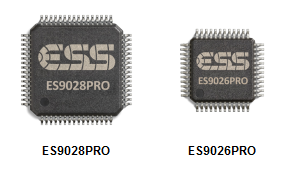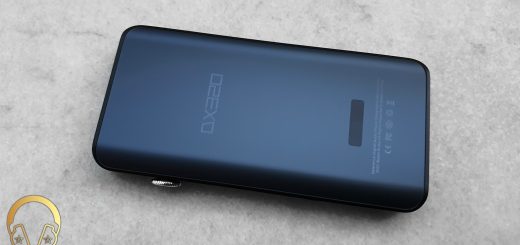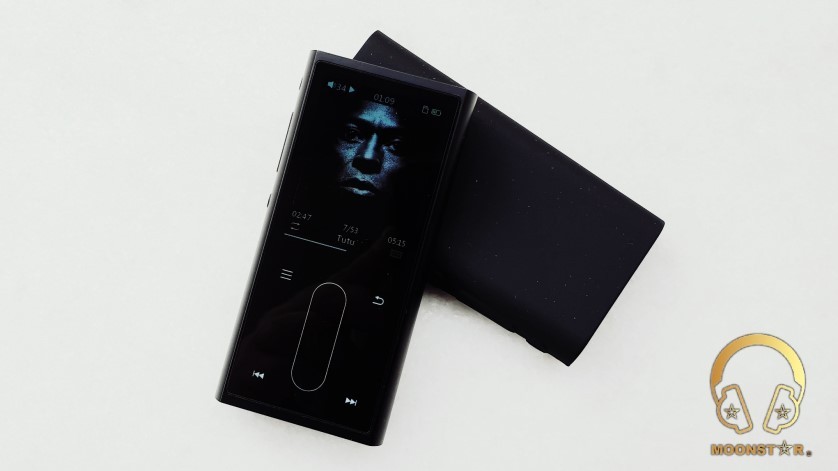Ibasso DX200 review

IBASSO DX200, The TOTL Sounding Player
About IBASSO:
Ibasso is one of the largest and most well-known DAP producers from China. The Ibasso DX200 is there lastest flaghip model.
This is a non sponsored review!!
Equipments used in this review:
- Ibasso DX200 (DAP)
- Noble Audio Wizard K10UA (IEM)
- Rhapsodio Solar (IEM)
- Audio-Technica ATH M50 (Openback Headphone)
- 2.5mm TRRS Balanced Cable of Rhapsodio Solar
- Burn-in cable
Albums and track used in this review:
- Michael Jackson – Bad Album (Flac 24bit/96Hz)
- Amber Rubarth – Sessions from the 17Th Ward Album (Tidal HIFI)
- Amber Rubarth – Scribbled Folk Synphonies Album (Tidal HIFI)
- Dr. Chesky’s Binaural Album (Flac 24bit/192Hz)
- Metallica – The Black Album (Flac 24bit/96Hz)
- Céline Dion – The Very Best of Céline Dion Album (Tidal HIFI)
- Daft Punk – Random Access Memories Album (Tidal HIFI)
- Kraddy – Be A Light Album (Tidal HIFI)
- Nina Simone – I Put A Spell On You Album (Tidal HIFI)
- Thomas Zwijsen – Nylon Maiden Album (Tidal HIFI)
- Opeth – Pale Communion Album (Apple Music)
- London Grammar – If you Wait Album (Flac 24bit/44.1Hz)
- Twenty One Pilots – Fairly Local (Tidal HIFI)
- Two Steps From Hell – Battlecry Album (Flac 16bit/44.1Hz)
3. Box Contents:
The device comes with a stylish box and a nice presentation.
The box contains the following contents;
· Ibasso DX200
· USB Type-C to USB
· Coax cable
· Burn-in Cable
· Leather case
· Warranty and product identification card
The USB cable is covered with a fabric material and has a good quality. This cable uses a new generation USB Type-C connector. Coax and burn-in cables are also familiar to us from other Ibasso models.
The leather case feels good and is fully compatible with the device.
By the way, there was no screen protector in the box, but later I noticed that Ibasso already put it on the screen. I’m glad I will not struggle with sticking 
4. Material Quality and Workmanship:
The DX200 is made of CNC engraved aircraft type Aluminyum.
I didn’t found any quality issues or defects on the device.
The only criticism will come to the physical keys, because they look a little small. For example, the Sony ZX2 has larger keys in a similar position, making it easier to use it in your pocket.
The volume pot on the DX200 is sensitive and feels more robust and precise than all Astell&Kern devices I’ve used before. However, the bad thing about the volume wheel is that it is too sensitive. To turn it to loud volumes takes to much time and too much turns 
Personally, I think that the Lotoo Paw Gold is the most successful device in this regard.
5. Hardware:
a) Display:
The device has 4.2” IPS display with a resolution of 768 * 1280 pixels. It is a bright and good looking screen with vibrant color reproduction.
b) Processor, Ram, Xmos:
Inside the DX200 is an 8-core Rockchip RK3368 processor. It would be nice to see a Snapdragon inside, but the RK3368 has enough processing power for a DAP in this segment.
The DX200 features the XMOS XU208 Chip, with a 2GB LPDDR3 type of Ram (unluckily an old type of ram). The internal storage type is eMMC with 64GB capacity and it uses a Thesycon USB Audio Driver for the USB DAC function.
The DX200 has only one Micro SD Card slot. That means you have a max storage capacity of 64 + 256 = 320 GB. Competitors like the Sony WM1A or even the cheaper Fiio X5 3GEN have two slots or have more build in memory like the Sony NWZ ZX2.
c) Wireless Connectivity:
The device has a build in Wi-fi antenna that supports speeds up to 5GHz and has also Bluetooth 4.0 connection. I found out that old routers with only 2.5GHz speed capability can cause to noise/interferences while listening or downloading tracks form online services like Tidal, Spotify etc. and I think that’s a little bit annoying.
d) Amplifier Card:
The standard AMP1 amplifier card, which comes pre-assembled with two screws, has 3 analogue audio outputs. These are Line Out, 3.5mm Phone out and a 2.5mm TRRS Balanced out.
AMP (Amplifier) cards with different features, power and sound characteristics will released in the near future.
There is also the new released AMP2 amplifier Card, which has a four channel architecture. I didn’t had the chance to test it out, so for more information please visit this link.
E) Digital Outputs:
At the top of the unit, apart from the analog audio outputs on the AMP1 card, we have a digital audio output, called SPDIF. This Audio output slot supports Coax and Mini Optical interfaces at the same time.
F) Heart of the DX200, the DAC:
I would like to give some more details about the DAC, which we can call the heart of the device. Ibasso used two ESS Saber branded 32bitES9028PRO’s as DAC.
ES9028Pro & small brother ES9026Pro

DX200 has 16 DAC cores in total, with 8 channels per DAC (2 DAC’s x 8 DAC cores).
This DAC is donated with a technology that is called HyperStreamDAC. With this feature, the device has a Dynamic Range (DNR) of 135dB.
The DX200 has also an external USB DAC feature that uses the Thesycon USB Audio Driver technology that is promoted to be the best external DAC feature released on a DAP ever.
Unfortunately, I can not comment on the USB DAC feature for now because my PC at home is death at the moment 
6. Software and Interface:
The DX200 comes with Android Marshmallow 6.0.1 pre installed. The user has the option to switch between Android and Mango OS which is pure music software. The Mango OS Grafical User Interface = GUI, looks familiar to the Linux-based operating systems on the DX50, DX80 and DX90.
a) Mango OS:
The pure music player interface we call Mango OS is very simple and has a useful structure. It looks very similar to these I saw on the DX80. The only difference is that the DX200 has a digital filters option in its menu. Some users have said that the sound is more refined when using Mango OS. Yes, there are some small differences, but don’t expect a night and day difference.
A short GUI Demo:
My biggest complain comes to the software of the DX200. I think that Ibasso has shipped this device to the market with a beta stage software that has/had a lot of “Bugs”
The first things I noticed where some software related freezing and disconnection issues.
But don’t worry, because Ibasso is a company that is constantly releasing new software updates that fixes such problems.
The device is now much faster and stable than before after I did some software updates in the past months. With new upcoming updates I guess that all problems will completely disappear.
b) Android
Of course, one of the greatest benefits of the Android operating system is that we can use “Online Streaming” applications like Tidal, Spotify, Apple Music, just like in popular devices for example Fiio X7 and X5 3Gen, Onkyo DP-X1 etc.
BTW, it will be possible to download Google Playstore to the DX200.
What did I said possible!!!  Yes, because the device does not come with Google Playstore pre-installed. Of course, not having Playstore doesn’t mean you can’t install apps!
Yes, because the device does not come with Google Playstore pre-installed. Of course, not having Playstore doesn’t mean you can’t install apps!
All you need to do is to download the application’s .apk file (it’s like an .exe file in Windows) over internet and install it via a file browser to the device.
BTW, the DX200 has a web browser, calendar and even a calculator 
I mostly use Tidal and Apple Music. It’s a great thing to have the possibility to stream or download your favorite music tracks, playlists or albums to your device over online service.
USB Audio Pro can be installed for those who want to use a Parametric EQ.
Updates can be made either by downloading the .zip file from Ibasso’s own site or directly to your device or via an OTA update (Over the Air) just like on a Smartphone. It’s good to have OTA support like Astell&Kern devices, but I am warning you, Chinese servers are very slow J
7. Mango Player:
The Mango Player is Ibasso’s own Player application, which is found in the Android interface and has the same look and feel like the Pure Mango OS. I am very surprised that this application is very fast, even faster than the Mango OS interface. Oh, and it’s also very handy!
8. Battery Life:
The DX200 has a lithium polymer battery with a capacity of 4400mAh / 3.8V. The device is charging fast in approx. 2 – 2.5 hours.
Battery life is about 6 hours when online services like Tidal, Soptify etc. are used. But if you listen to regular flac or mp3 files the battery life will increase up to 7 – 8 hours.
In short, nobody should expect the legendary Sony battery life from such a powerful device!
Times New Roman”;mso-ansi-language:EN-US”> Battery life is based on High Gain and and sound level is 110.
9. Spesifications:
2.5mm Balanced Output: Output voltage 6Vrms
Frequency Response: 20Hz-20KHz -0.16dB
Signal to Noise Ratio: 125dB
Crosstalk: -122dB THD+N: < 0.0002%, -114dB (64Ω@3Vrms)
3.5mm HP Output: Output voltage 3Vrms
Frequency Response: 20Hz-20KHz -0.16dB
Signal to Noise Ratio: 122dB
Crosstalk: -118dB THD+N: < 0.00032%,-110dB (32Ω@1.8Vrms)
Lineout: Output voltage 3Vrms
Frequency Response: 20Hz-20KHz -0.16dB
Signal to Noise Ratio: 122dB THD+N: < 0.00025%,-112dB
Screen Size: 4.2inch 768*1280
Battery Capacity: 4400mAh
Dimension: 5.1L x 2.7W x 0.77H (inch) 128.5L x 69W x 19.5H (mm)
Weight: 240gr or 8.5oz
The DX200 supports a wide range of music formats. It supports almost all of the current and traditional high-resolution files.
All of the formats listed below are also supported when the device is used as an external USB DAC.
APE, FLAC,WAV, WMA, AAC, ALAC, AIFF, OGG, MP3, 32bit/384 kHz Bit for Bit.
Native DSD Support up to 512x (DFF, DSF, DXD)
M3U Playlist and CUE sheets supported
The Sound:
Now,
I have burn-in the device for approx. 230 -240 hours before I wrote this review!
All comments related to the sound are my personal and subjective opinions made after intensive listening with the stock AMP1 amplifier card and the firmware version V2.2.110.
a) The Timbre:
The DX200 uses a Saber DAC just like its predecessor the DX100. Because of this fact the device faced a number of prejudices before it was released and I think it’s not hard to understand why so many critics made for this device. Saber DAC’s have generally a bright and clear tonality.
Luckily Ibasso misled me and gave the Sabre DAC inside the DX200 a warmer and more natural sounding tuning that is ideal for long listening periods.
I think Ibasso is the second company after Hifiman that has made a good job by adding warmth to a Saber DAC, congratulation Hifiman and Ibasso!
b) The Bass:
The Bass response of the DX200 is close to natural not as tight as the Paw Gold or the Hifiman HM901s but well controlled and well textured, exactly what a TOTL DAP should be.
The bass region gives the sound a slightly warmth that is welcome for me, but what we don’t except form a player with a Sabre DAC under the hood
The bass is fast and gives the overall sound spectrum enough body, so that you can listen to a wide variety of genres.
Overall, I think that the DX200 is not a bass shy nor a bass heavy DAP that has enough power and juice to stratify its owner.
I am using the Noble K10UA and the ATH M50 to test out the mid- and sub-bass capability of the device:
I loved the pairing with both earphones. The sub-bass goes really low and the mid-bass hit’s hard enough to vibrate my ears
Nice to see that the bass is not attaching the rest of the frequencies, that would otherwise ruin the clearness of the sound and the wonderful vocal and instrument presentation of this device.
c) The Mids:
WOW, the Dx200 is ear-catching with its natural, transparent and organic sounding mids. It has a Top of the Line sound that is welcome when we think again that this device is two or three times cheaper than its competitors.
My reference album for vocal and instrument separation is the “Sessions from the 17Th Ward by Amber Rubarth”. She has a wonderful voice! This album is also well recorded and includes lots of instruments and is a perfect album to make my critical listening.
Now, the DX200 is a dry sounding DAP, it is not warm or bold sounding like the Hm901s or thin and bright like the old DX100. The resolution of the mids is perfect for its price tag, the instrument separation is great, the vocal are neither forward nor recessed, its somewhere in the middle.
I have noticed some stress in the upper mid region at the first listening periods, but after an intensive burn in the device sounded more controlled. Finally, after the 200 hour barrier the device sounds more mature and the stress is now only barely noticeable.
d) The Highs:
Sabre , what did they done to you… 
First thing I notice is that the highs are smooth clear and engaging. It is detailed, nonaggressive and well controlled. I think that the Ibasso team did a great job by teaming the highs of a Sabre chip.
BTW, the DX200 is something between the Lotoo PG and the HM901s. It is not a detail monster like the Lotoo PG that is sometimes to aggressive for my taste and is not too soft like the warmer sounding Hifiman HM901s.
After intensive compression with the HM901s I found out that the DX200 is only a little bit more transparent and clean sounding than the slightly warmer tuned HM901S.
The DX200 did a great job by handling Celine Dion’s powerful voice. I didn’t notice noticeable or at least a annoying sibilance while listening it with the Rhapsodio Solar over the 2.5mm balanced headphone jack and Noble Wizard K10 with the regular 3.5 phone out.
Only in bad recorded albums like “Metallica’s – The Black” album is some sibilance noticeable.
e) The Soundstage:
This device has a massive soundstage; it is wider than the Lotoo PG and Hifiman HM901s.
When it comes to deepness, the Lotoo PG is the clear winner, followed by the DX200 and the HM901s.
The instrument separation and positioning is very good due the silent background. It has the ability to give you a good 3D like soundstage with the right gear.
The soundstage benefits from the 2.5mm balanced out. It has an even wider and deeper presentation, but don’t get me wrong, it’s not a night and day difference, but noticeable.
The Ibasso DX200 & Hifiman HM901s side by side

f) Background Noise:
Over the 3.5mm unbalanced out, the device sounds clean, noiseless and has a dark background. However, with the Noble K10 and Rhapsodio Solar, I have noticed only a small amount of noise in loud volume listening.
The 2.5mm Balanced out is “Dead Silent”. It’s very impressive for the standard AMP1 amplifier card.
When I started using the device for the first time, there was a slight intermittent noise with sensitive IEM’s while using the Wifi connection to stream or download music over online services. But this issue was gone after the latest software update.
Overall Score:
Accessorys: 8
Build Quality: 8
Software: 6
Hardware: 7
Sound Quality: 9
Battery life: 6
* 1 is bad & 10 is perfect
Final Words:
When compared next to devices in the same price range like the AK300, AK100II, Sony WM1A etc. its very hard to find a negative point for this device.
The DX200 is clearly in the Champions League of portable Digital Audio Players. At this price point you can’t go wrong. The only negative results seems to be software related and can be fixed with future FW updates, that will released official and/or from developers just like lurker0.
I hope you enjoyed my review.






















